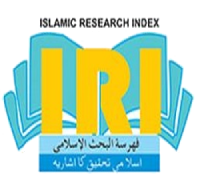| ISSN [Print]: | 2790-5330 |
| ISSN [Online]: | 2790-5349 |



![]()
As part of the submission process, authors are required to check off their submission’s compliance with all of the following items, and submissions may be returned to authors that do not adhere to these guidelines
The authors should provide their names, email addresses, phone number(s), present position/title besides the names of the universities/colleges on the title page separately submitted with the manuscript to facilitate academic review and production. Thus manuscript should not contain any mention or details of author(s).
Author Agreement Statement must be submitted separately with manuscript and title page. In which author has to ensure that the research work, he/she is submitting for publication, is genuine and the same paper has neither been published nor has it been presented elsewhere for publication.
Draft must be submitted at the website http://nuqtahjts.com/index.php/njts with a covering letter carrying the title of the article, author’s full name, institutional affiliation, mailing address and any other information that the author wishes to send related to the paper. The authors are requested to submit their scholarly works while following these instructions:
Title: The title should be comprehensive, precise, and reflect the original theme of the article. The titles of Arabic and Urdu articles are to be translated into the English Language as well.
Abstract: An abstract of 200 to 300 words in English should accompany each manuscript. It should summarize the content of the paper written in simple sentences without subheadings.
Keywords: 4-6 keywords of the articles may also be listed just beneath the English abstract.
Introduction: Discuss the purpose of the Research and summarize the foundation for the study.
Results & Conclusion: Describe your results in logical sequence at the end of the text. The conclusion of the study should be expressed very clearly and an influential perspective.
Transliteration of Arabic and Urdu Words: For Urdu and Arabic words in English articles, Transliteration must be followed.
All citations should follow the Chicago Manual of Style. The details of the style can be observed on www.chicagomanualofstyle.org
– Reference from the Qur’an: Al-Quran, 3: 212
– Reference from Classical Hadith Compilations
Muhammad b. Isma‘il al-Bukhari, al-Jami‘ al-Sahih, Kitab al-Zaba’ih wa al-Sayd, Bab Akl Kull Dhi Nab min al-Siba‘, Hadith No. 5530.
– Books with single author:
– Books with two authors:
– Books with Three Authors:
– Books with more than Three Authors:
– Books in more than one Volume:
– Chapter in a Book:
– Articles: Author, “Title of paper,” Journal name, volume x, no. x (year): x-x. If only volume is given issue is not mentioned then: Author, “Title of paper,” Journal name, volume x (year): x-x.
Example:
Or
– Online Journals:
– Websites:
“McDonald’s Happy Meal Toy Safety Facts,” McDonald’s Corporation, accessed July 19, 2008, http://www.mcdonalds.com/corp/about/factsheets.html.
– Encyclopedia:
H.A.R. Gibb, J. H. Karamers and others, The Encyclopedia of Islam, (Leiden: E. J. Brill & London: Luzac & Co., 1960), s.v. “Shahādah.”
Note: All-known figures mentioned in the article must be briefly introduced and references from books should also be quoted.
Nuqtah Journal of Theological Studies has no funding agencies. Thus the Management decided publishing fee of 15,000 RS. It contains the expenses of National and International reviews, publishing, long time archiving, website running, typesetting, copyediting and other necessary charges.
|
Contact : Editor: Dr. Shumaila Majeed Resurgence Academic and Research Institute, 666 Talha Block, F Sector, Bahria Town Lahore, Pakistan Email: editor@nuqtahjts.com Ph: +92 306 471 9473 |
